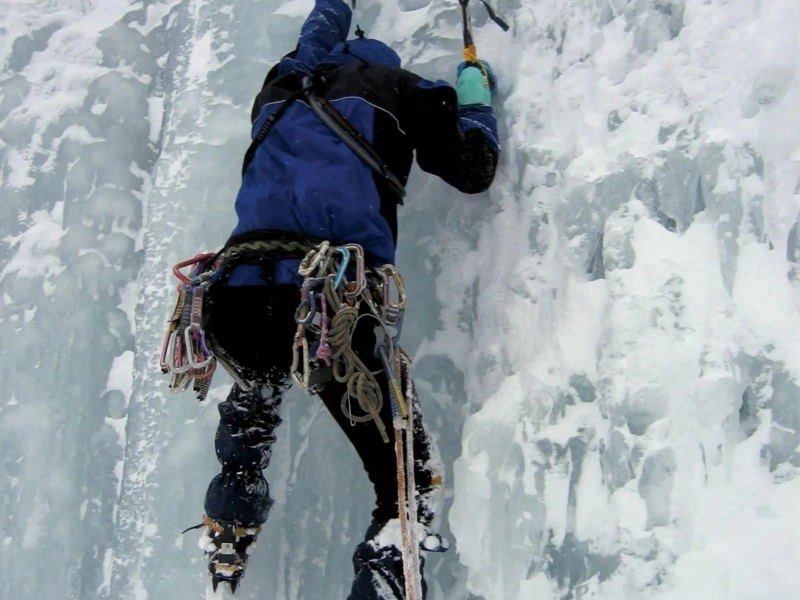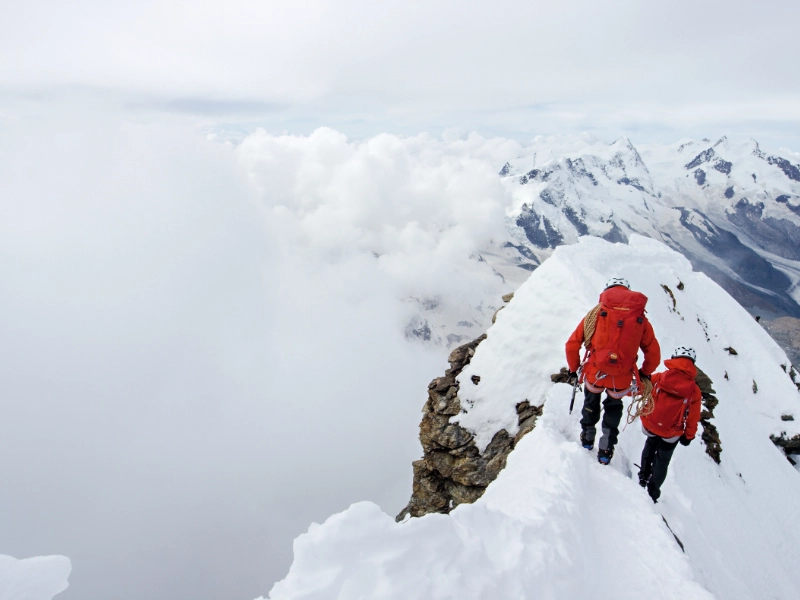There are certain risks that climbers are unable to manage. A few deadly instances of uncontrollable hazards are weather, crevasses, and avalanches. Hypothermia, inadequate clothing, starvation, and dehydration are further risks. By carefully organizing and preparing for your hike, as well as exercising caution while hiking, you can prevent them.
 One of the biggest and most significant objective risks that mountaineers encounter is avalanches. They can seriously hurt people and be fatal. Avalanches can be avoided by being aware of your surroundings and avoiding ridges and cracks. Additionally, you want to have specialist climbing gear with you so that, in the event of a fall, you can self-arrest. You should be proficient with the equipment and improve on your rhythmic footwork. Additionally, you should avoid using your equipment past its specified lifespan and keep it dry and clean at home.
A lot of mountaineers lose their lives because they don't think about the descent. This can be the result of their exhaustion or a shortage of supplies. It's crucial that you give yourself a deadline and follow it, even if the summit appears to be approaching quickly. This will prevent you from overworking yourself to the point of exhaustion, which could result in severe injury. Wearing appropriate clothing composed of breathable materials, such as wool or synthetics, is also crucial.
One of the biggest and most significant objective risks that mountaineers encounter is avalanches. They can seriously hurt people and be fatal. Avalanches can be avoided by being aware of your surroundings and avoiding ridges and cracks. Additionally, you want to have specialist climbing gear with you so that, in the event of a fall, you can self-arrest. You should be proficient with the equipment and improve on your rhythmic footwork. Additionally, you should avoid using your equipment past its specified lifespan and keep it dry and clean at home.
A lot of mountaineers lose their lives because they don't think about the descent. This can be the result of their exhaustion or a shortage of supplies. It's crucial that you give yourself a deadline and follow it, even if the summit appears to be approaching quickly. This will prevent you from overworking yourself to the point of exhaustion, which could result in severe injury. Wearing appropriate clothing composed of breathable materials, such as wool or synthetics, is also crucial.
 A chasm can be fatal if you fall into it; they are often unseen due to snow cover. For creatures like polar bears that might take up residence in crevasses, there are additional risks.
You could endanger yourself if you don't know what kind of mountain you're climbing or if you don't follow established safety protocols. This involves mishandling or utilizing tools—like crampons and ice axes—in improper ways or for reasons other than those for which they were intended. It's also critical to understand the suggested lifespan of your equipment and to routinely check it for wear and tear.
Another significant risk of mountaineering is being lost, particularly in inclement weather or when you're unfamiliar with the area. Planning beforehand, anticipating the weather, and having backup plans in case something goes wrong will help you avoid this. Additionally, make sure you stay near your friends so that, in the event that one becomes lost, the other may hear their pleas for assistance.
A chasm can be fatal if you fall into it; they are often unseen due to snow cover. For creatures like polar bears that might take up residence in crevasses, there are additional risks.
You could endanger yourself if you don't know what kind of mountain you're climbing or if you don't follow established safety protocols. This involves mishandling or utilizing tools—like crampons and ice axes—in improper ways or for reasons other than those for which they were intended. It's also critical to understand the suggested lifespan of your equipment and to routinely check it for wear and tear.
Another significant risk of mountaineering is being lost, particularly in inclement weather or when you're unfamiliar with the area. Planning beforehand, anticipating the weather, and having backup plans in case something goes wrong will help you avoid this. Additionally, make sure you stay near your friends so that, in the event that one becomes lost, the other may hear their pleas for assistance.
 Numerous types of terrain and weather are frequently encountered on a climbing journey. Hiking routes, for instance, may be dry and hot, but ridges and glaciers may experience bitterly cold weather with strong winds.
A storm has the power to drastically change the weather, making travel considerably more challenging (and maybe putting you at risk for hypothermia). Climbers on Everest wait so long for a favorable weather window before attempting to reach the summit, in part because doing so in the middle of a storm might be fatal.
Getting lost is another serious risk. Climbers should always travel in pairs and keep track of their whereabouts on the mountain. They will be less likely to inadvertently take the incorrect road or become lost as a result. They should also know how to use the restroom properly and not leave any trash behind, since that would ruin the trail for other hikers. Climbers should also make sure to properly and frequently hydrate—it's easy to forget about thirst when you're busy climbing!
Numerous types of terrain and weather are frequently encountered on a climbing journey. Hiking routes, for instance, may be dry and hot, but ridges and glaciers may experience bitterly cold weather with strong winds.
A storm has the power to drastically change the weather, making travel considerably more challenging (and maybe putting you at risk for hypothermia). Climbers on Everest wait so long for a favorable weather window before attempting to reach the summit, in part because doing so in the middle of a storm might be fatal.
Getting lost is another serious risk. Climbers should always travel in pairs and keep track of their whereabouts on the mountain. They will be less likely to inadvertently take the incorrect road or become lost as a result. They should also know how to use the restroom properly and not leave any trash behind, since that would ruin the trail for other hikers. Climbers should also make sure to properly and frequently hydrate—it's easy to forget about thirst when you're busy climbing!
 When climbing a mountain, even the smallest error might be fatal. Falling into crevasses, which are deep fractures in the ice, being struck in the head by boulders, making a navigational blunder, and employing unsafe equipment are some examples of these risks.
It's critical to understand your physical limitations and to never overextend oneself. Fatigue could result from this, which is hazardous. Your body will fail if you are too exhausted. Additionally, being tired can make you reckless and increase your risk of self-harm.
Altitude sickness, or an accumulation of fluid in the lungs, can be brought on by high altitude. Both cerebral and pulmonary edema are potentially fatal if they develop from this. Carrying bottled oxygen or acclimating gradually over several days are the two ways to prevent this.
When climbing a mountain, even the smallest error might be fatal. Falling into crevasses, which are deep fractures in the ice, being struck in the head by boulders, making a navigational blunder, and employing unsafe equipment are some examples of these risks.
It's critical to understand your physical limitations and to never overextend oneself. Fatigue could result from this, which is hazardous. Your body will fail if you are too exhausted. Additionally, being tired can make you reckless and increase your risk of self-harm.
Altitude sickness, or an accumulation of fluid in the lungs, can be brought on by high altitude. Both cerebral and pulmonary edema are potentially fatal if they develop from this. Carrying bottled oxygen or acclimating gradually over several days are the two ways to prevent this.